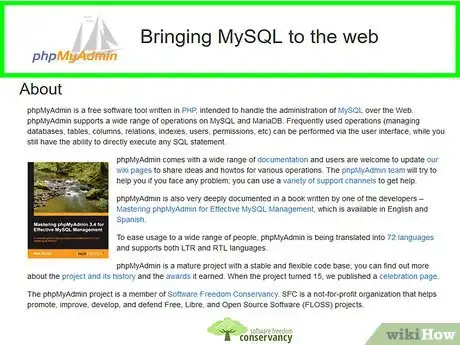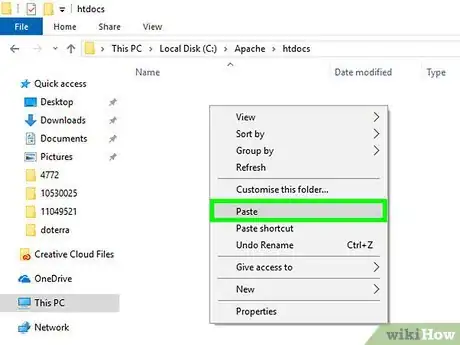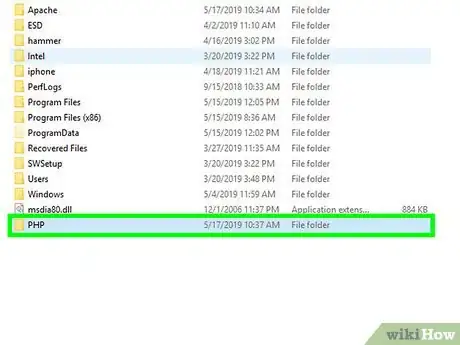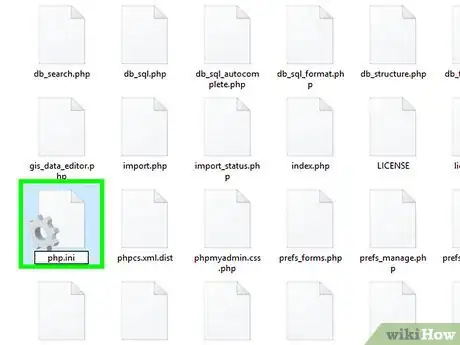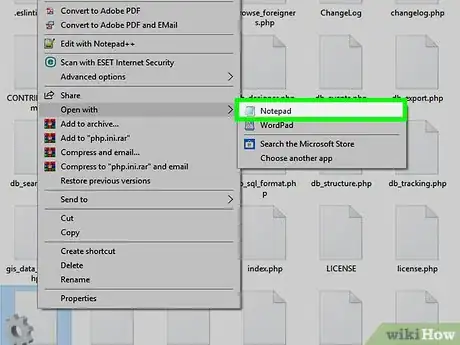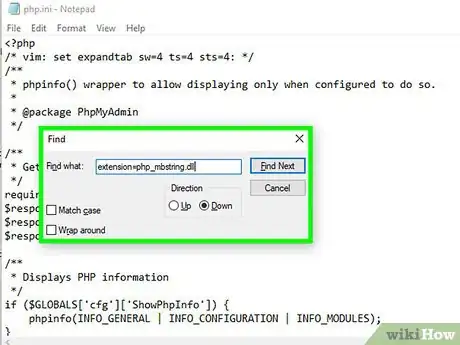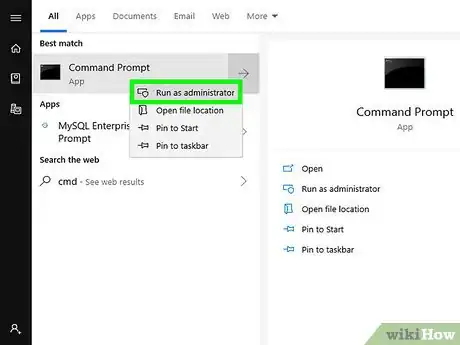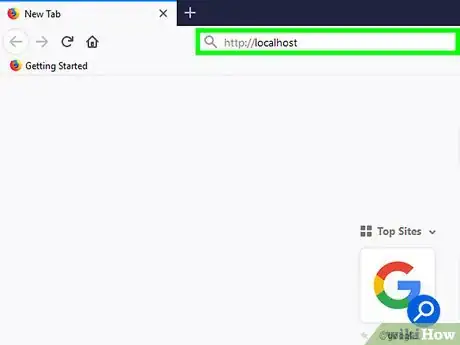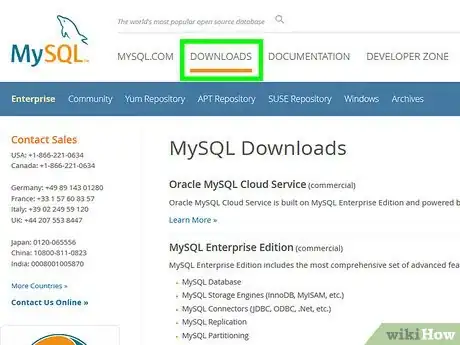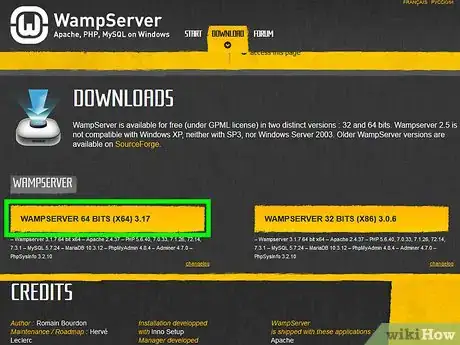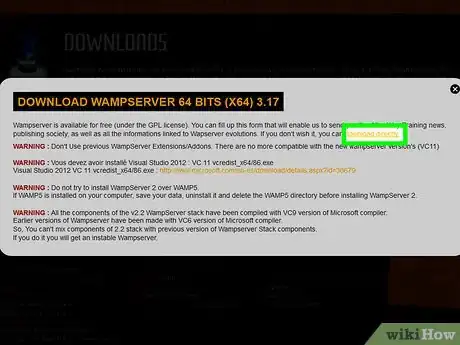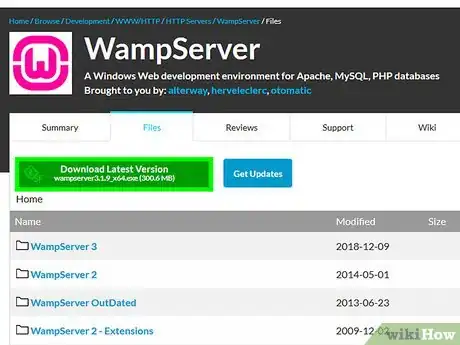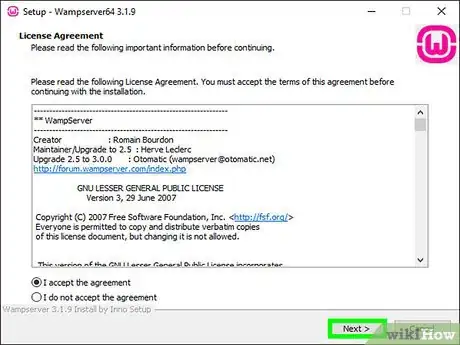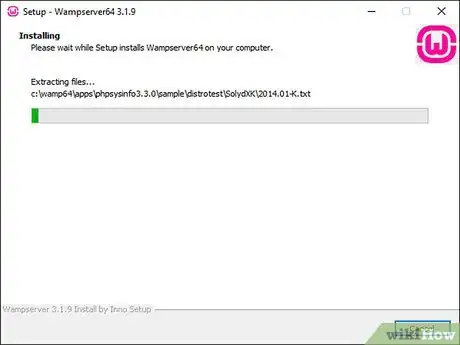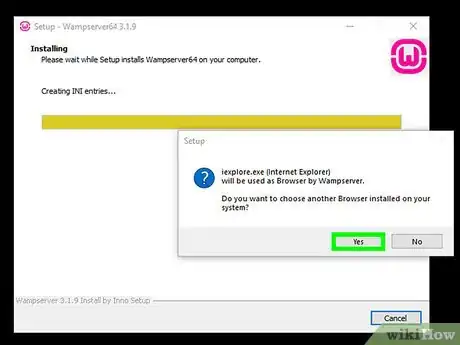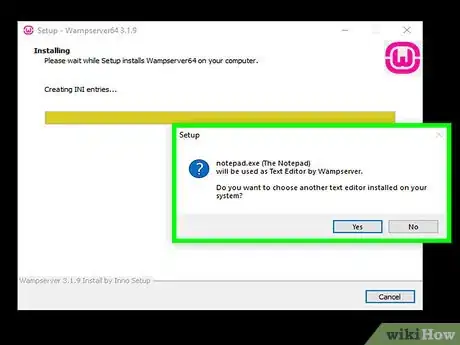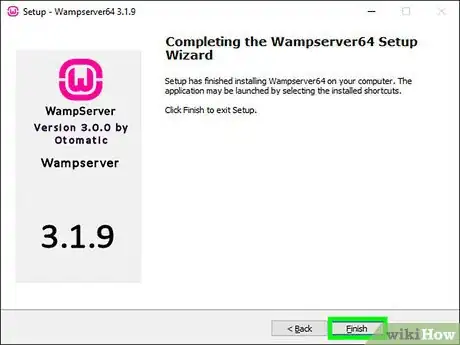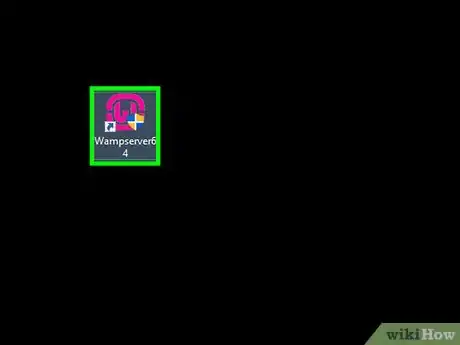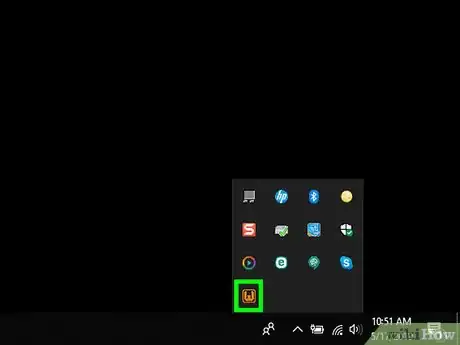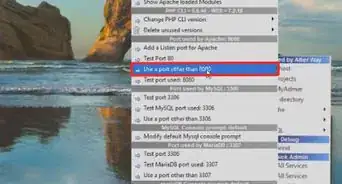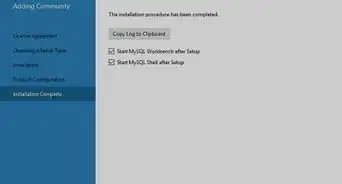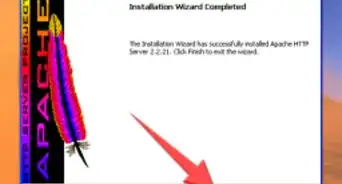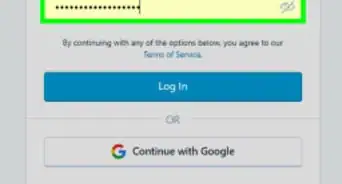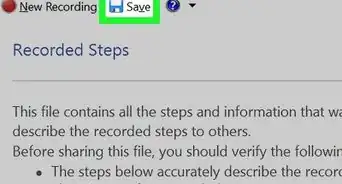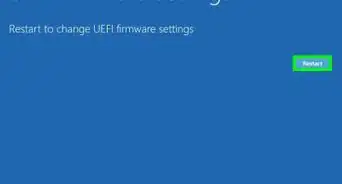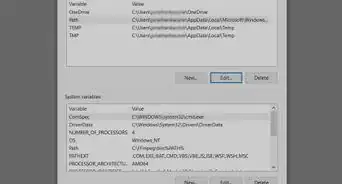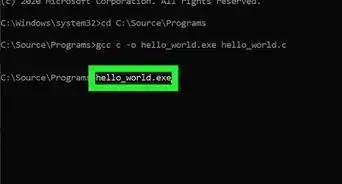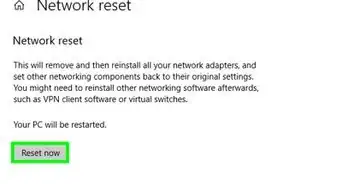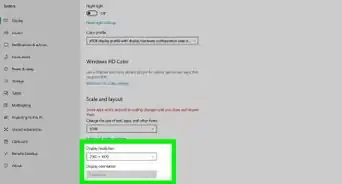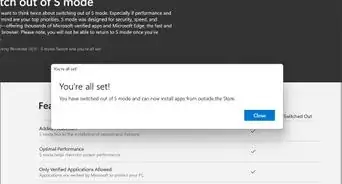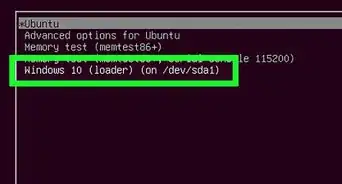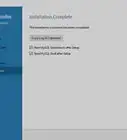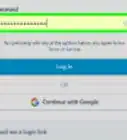This article was co-authored by wikiHow staff writer, Jack Lloyd. Jack Lloyd is a Technology Writer and Editor for wikiHow. He has over two years of experience writing and editing technology-related articles. He is technology enthusiast and an English teacher.
The wikiHow Tech Team also followed the article's instructions and verified that they work.
This article has been viewed 1,133,136 times.
Learn more...
This wikiHow teaches you how to install the phpMyAdmin program on your Windows computer. You can use phpMyAdmin to control a MySQL server from within a web browser, but to do so you must first have a MySQL server set up on your computer. You can also use a free program called WAMP to automatically install phpMyAdmin on your server.
Steps
Using an Existing Apache Server
-
1Make sure that you've installed Apache, PHP, and MySQL. Apache, PHP, and MySQL must all be installed and configured on your computer before you can install phpMyAdmin in this way.
-
2Open the phpMyAdmin download page. Go to https://www.phpmyadmin.net/ in your browser.Advertisement
-
3Click Download. It's a green button in the upper-right side of the page. The phpMyAdmin ZIP folder will begin downloading onto your computer.
- You'll also see the version number next to Download (e.g., for the November 2017 version of phpMyAdmin, you'd click Download 4.7.5).
-
4Click Close when prompted. This will return you to the phpMyAdmin webpage.
-
5Open the phpMyAdmin folder. Double-click the downloaded phpMyAdmin ZIP folder to do so.
-
6Copy the phpMyAdmin folder's contents. Click the regular phpMyAdmin folder in the ZIP folder's window, then press Ctrl+C.
-
7Go to your Apache host folder. This is typically a folder named "htdocs" inside of the "Apache" folder, which should be located in the "C:" folder on your hard drive.
- The Apache host folder usually has a text document named "index.php" or something similar.
- The fastest way to get to this folder is by clicking This PC on the left side of the window, double-clicking the Apache folder, and double-clicking the htdocs (or similar) folder.
-
8Paste the copied folder into the host folder. Press Ctrl+V to paste the copied phpMyAdmin folder into the Apache host folder.
-
9Change the copied folder's name to phpmyadmin. Click the phpMyAdmin folder, click Home, click Rename in the toolbar, type phpmyadmin into the folder's name field, and press ↵ Enter.
-
10Open the PHP folder. This folder is located in the "C:" folder along with the "Apache" folder. Once you find the PHP folder, double-click it to open it.
-
11Find the "php.ini-production" file and rename it. You'll change this file's name to php.ini.[1]
-
12Double-click the "php.ini" file. It will open in your default text editor (e.g., Notepad), though you may first have to select Notepad from a list and click OK.
-
13Find the "extension=php_mbstring.dll" line of text and remove the semicolon. You'll see the semicolon to the left of this line of text.
- You can press Ctrl+F to bring up a "Find" window where you can enter this line of text to go to it.
-
14Find the "extension=php_mysqli.dll" line of text and remove the semicolon. Once you've done this, your phpMyAdmin server is good to go.
-
15Save your changes and exit Notepad. Press Ctrl+S to save, then click the X in the top-right corner of the Notepad window to exit Notepad.
-
16Run your Apache server. Open Command Prompt in Administrator mode by right-clicking Start , clicking Command Prompt (Admin), and clicking Yes when prompted, then do the following:
- Type in cd /Apache24/bin and press ↵ Enter (replace "Apache24" with your Apache folder's name).
- Type in httpd -k restart and press ↵ Enter.
-
17Test your phpMyAdmin program. Open a web browser, then type http://localhost into the address bar and press ↵ Enter. This should take you to the phpMyAdmin login page.
Using WAMP
-
1Make sure that you have MySQL installed. WAMP allows you to interact with an existing server on your computer, but won't create a server in and of itself.
-
2Check your computer's bit number. You'll need to know this in order to determine the version of WAMP that you can download.
-
3Open the WAMP website. Go to http://www.wampserver.com/en/ in your web browser.
-
4Scroll down and click either WAMPSERVER 64 BITS or WAMPSERVER 32 BITS. The number that you choose here will depend on your computer's bit number. Clicking either option will prompt a pop-up window.
-
5Click the download directly link. It's in the upper-right side of the pop-up window. Doing so takes you to a Source Forge page from which you can download your version of WAMP.
-
6Click Download. This green button is near the top of the page. WAMP will begin downloading onto your computer.
- The download will take several minutes to complete.
-
7Install WAMP. Double-click the downloaded WAMP setup file, then do the following:
- Click Yes when prompted.
- Select a language and click OK
- Check "I accept the agreement" and click Next
- Click Next three times.
- Click Install
-
8Wait for WAMP to finish installing. This will take a few minutes.
-
9Choose a browser when prompted. Click Yes, then go to your preferred browser's EXE file, click it, and click Open.
- For example: to select Chrome, you would find and click on the Google folder on the left side of File Explorer, then double-click the Chrome folder and select the Chrome icon.
- If you would prefer just to use Internet Explorer, click No instead.
-
10Select a different text editor if needed. If you don't want to use Notepad as your server's text editor, click Yes when prompted, then find the EXE file for the text editor that you want to use, select it, and click Open.
- Click No if you want to keep Notepad as the default text editor.
-
11Finish the setup. Click Next, then click Finish on the final WAMP window. WAMP is now installed on your computer.
-
12Open WAMP. Double-click the pink "Wampserver" icon on your desktop, then click Yes when prompted. This will prompt your server to start running.
-
13Click the WAMP icon in the system tray. On the far-right side of the Windows toolbar, you should see an orange or green WAMP icon. Clicking this will prompt a pop-up menu.
- You may first have to click the upward-facing arrow in the toolbar to see the WAMP icon.
-
14Click phpMyAdmin. It should be near the top of the pop-up menu. As long as your server is properly installed, doing so will open the phpMyAdmin login page in your preferred browser.
Community Q&A
-
QuestionWhat do I do if I type localhost/phpmyadmin/, and it says "localhost refused to connect"?
 Community AnswerThere is error in the database connection. Try to solve that first. Check your connection code and try again. Also check whether the localhost ID is correct.
Community AnswerThere is error in the database connection. Try to solve that first. Check your connection code and try again. Also check whether the localhost ID is correct. -
QuestionHow can I install and use this?
 Community AnswerGo to the phpMyAdmin website and download it from there. You will need a server.
Community AnswerGo to the phpMyAdmin website and download it from there. You will need a server.
Warnings
- phpMyAdmin is not set to run directly on a computer that doesn't have other server-related services (e.g., Apache) installed.⧼thumbs_response⧽
References
About This Article
1. Install Apache, PHP, and MySQL.
2. Download phpMyAdmin from https://www.phpmyadmin.net.
3. Unzip the file.
4. Copy the folder.
5. Paste the folder into your htdocs folder.
6. Rename the folder "phpmyadmin."
7. Rename "php.ini-production" to "php.ini" and open it.
8. Remove the semicolon to the left of "extension=php_mbstring.dll" and save.

